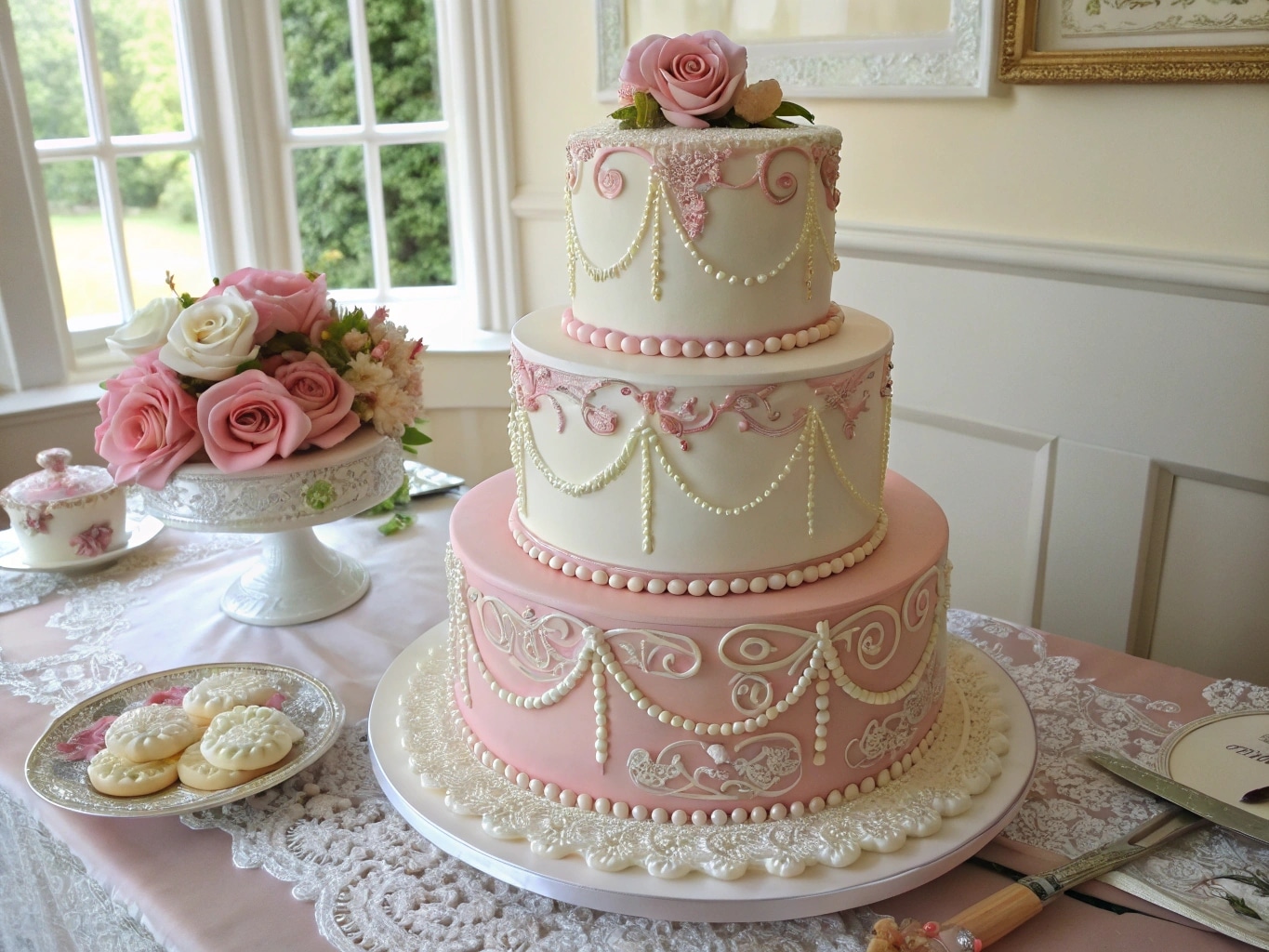Introduction
If you’ve ever gasped at the sight of a vintage lambeth cake, you’re not alone. Known for its lavish scrolls, intricate over-piping, and romantic Victorian charm, this cake style is experiencing a joyful revival—especially among decorators on Instagram and TikTok. In this guide, I’ll walk you through the most effective lambeth cake piping tips, how to use them, and how to practice the classic lambeth piping technique like a pro. Whether you’re trying to master the lambeth style piping for a birthday, wedding, or a dreamy lambeth heart cake, this step-by-step tutorial has everything you need.
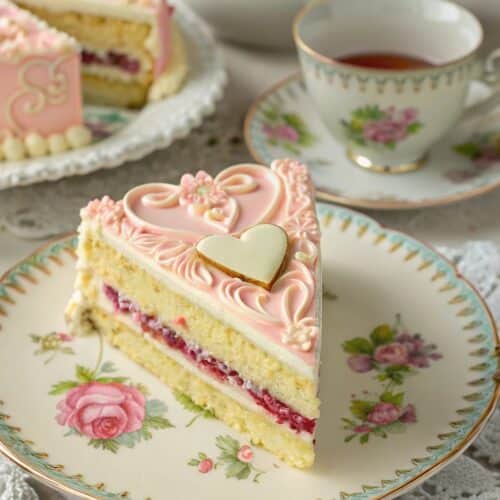
How to Decorate a Lambeth Cake with Vintage Piping Tips
Equipment
Ingredients
- Buttercream or royal icing (medium consistency)
- Cake (chilled and base-frosted)
- Lambeth cake piping tips: Wilton #1, #2, #18, #104, PME 1.5
- Food coloring gel (optional)
- Cake marker or ruler
- Piping bags and couplers
Instructions
- Chill your frosted cake to create a firm base.
- Map out symmetrical guidelines using a ruler or template.
- Start piping bottom borders using Wilton #18.
- Add swag piping with Wilton #104 or similar.
- Pipe scrollwork with fine tips like Wilton #1 or PME 1.5.
- Let each layer set before overpiping additional details.
- Continue layering elements using Lambeth style piping techniques.
- Finish with fine dots, stars, or pearls for extra depth.
Notes
Work in small sections and rotate the cake for even results.
Allow each layer to dry before adding more detail.
Nutrition
Table Of Contents
Table of Contents
How I Fell In Love With Lambeth Cake Piping Tips
I still remember the first time I saw a true Lambeth cake. It wasn’t at a wedding or bakery—but in a faded photo tucked into my grandmother’s recipe album.. The cake was three tiers of swirling perfection, covered in delicate pearls, ruffles, and scrolls. I was thirteen and already obsessed with buttercream. What caught my eye were the sharp contrasts and ornate layering—like edible architecture.
Fast forward a few decades, and now Lambeth piping is back in style, flooding Pinterest and retro baking feeds. The aesthetic is unmistakable—lambeth style piping turns a cake into a celebration of detail. I started experimenting during a rainy North Carolina weekend, with only a few Wilton tips and a lot of patience. My first attempt was too stiff, my lines shaky, but something about it felt like I was reviving an art form. That first success was a pink and white vintage heart cake, frosted for my best friend’s engagement.
And let me tell you, once you learn the correct Lambeth cake piping tips, the process becomes more like embroidery than baking.
Want to make your own vintage masterpiece? Let’s dive into the foundational tools you’ll need.
Must-Have Lambeth Cake Piping Tips
The first rule of Lambeth piping is: you’ll need multiple tips—because the beauty lies in layers. Start with:
- Wilton #1, #2, or PME 1.5 for fine strings and delicate details
- Wilton #18 or #199 for open stars and shells
- Wilton #104 or #125 for ruffles and ribbon swags
- PME #44 or Ateco #80 for tight, dramatic scrolls
Make sure to have multiple couplers ready, because Lambeth cake piping tips are often switched mid-design. These fine tips help achieve that vintage elegance, especially for accent work.
If you’re following a classic vintage Lambeth cake tutorial, you’ll notice that it often calls for shell borders, pressure piping, and even overpiping—done using two or three different sizes layered in symmetry. This isn’t minimalism. It’s drama, on purpose.
While you’re gathering your tools, check out my tutorial on easy chocolate ganache piping, which includes some similar tips you can reuse.
Best Piping Bags and Icing Consistency
Now that you’ve picked your Lambeth cake piping tips, let’s talk about the bags and icing you’ll need to get those vintage effects. Choose sturdy reusable piping bags—disposable ones can tear under the pressure of multiple passes and thick royal icing.
Consistency is crucial. For Lambeth piping, you’ll often work with two types:
- Medium-stiff royal icing for crisp scrolls and lines
- Slightly softer buttercream for ruffles and swags
Do a test squeeze on wax paper before committing to the cake. And remember to refill halfway—not to the top. That gives you more control for the intricate patterns.
As you experiment, don’t miss my breakdown on how to color icing naturally which can help you achieve those nostalgic pastel hues without synthetic dyes.
Building Lambeth Cake Piping Tips You Need to Know
To create a true showstopper, understanding Lambeth cake piping tips is essential. These tips aren’t just accessories—they’re the foundation of Lambeth piping, turning a plain cake into a tiered masterpiece. When layered correctly, each line of icing adds dimension, drama, and that nostalgic feel you only get from a classic vintage Lambeth cake.
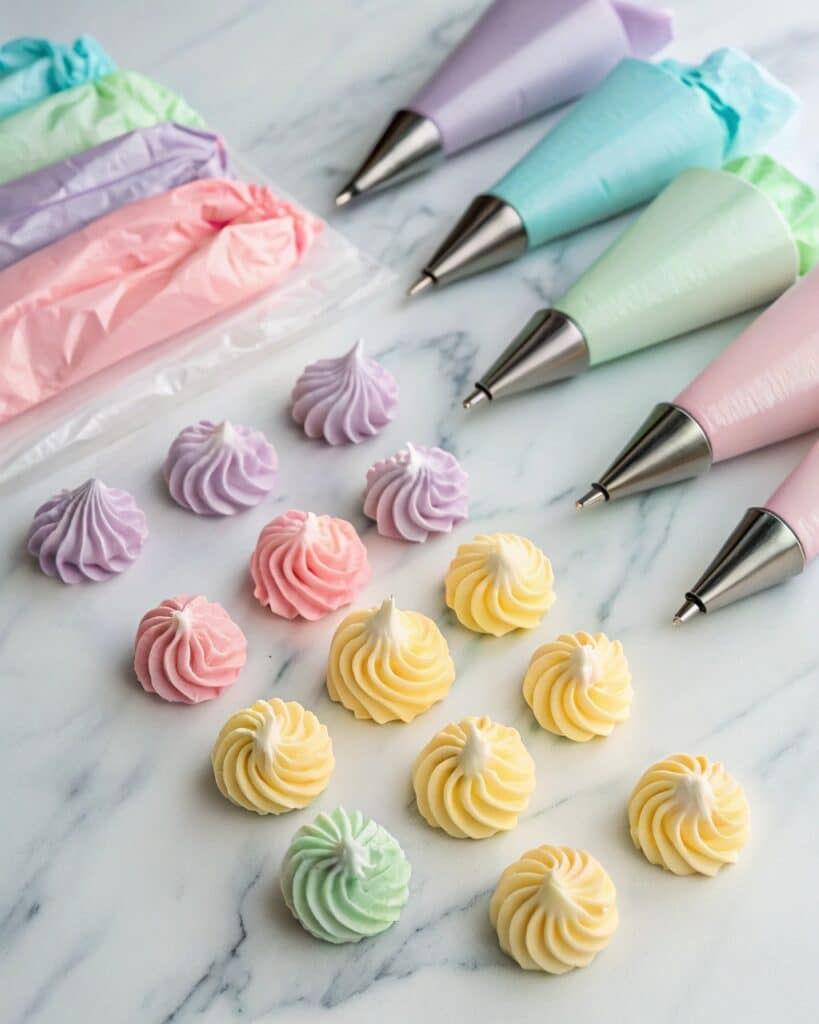
How to Use Lambeth Cake Piping Tips Effectively
For traditional Lambeth style piping, different tip sizes serve distinct purposes. Here’s how decorators build those iconic layers:
Shell Borders: Begin with Wilton #18 or #199. These are perfect for the deep, curved shell borders that create your cake’s structure. In Lambeth piping, these shells aren’t just decoration—they’re the visual rhythm that makes the entire design flow.
Scrolls and Swags: Use smaller round tips like PME #1.5 or Wilton #2 for scrolls, and petal tips like Wilton #104 for swags. Scrollwork is where you show off precision and elegance. Layer swags below or above scrolls depending on your pattern. Practicing on parchment before applying directly to a lambeth heart cake will improve your confidence.
Overpiping: Overpiping defines vintage Lambeth cake designs. This technique involves piping directly on top of already set layers, often using even smaller tips like Wilton #1. These detailed accents elevate your cake into a timeless work of edible art.
And if you’re decorating a heart-shaped cake, outline it carefully to make sure every swag lands exactly where it should.
Designing a Lambeth Style Cake: Placement and Flow
Lambeth style piping looks complex because it’s layered with intention. Planning ahead ensures everything aligns—especially on intricate shapes like a Lambeth heart cake.
- Use guides. Lightly score your cake with a toothpick or ruler to map out swags, heart outlines, or borders. This helps you place every swirl or scroll symmetrically.
- Build in layers. Start with the thickest piping first—shells, borders, or ribbons. Then add medium elements like swags or scrolls. Finally, apply your smallest tip to overpipe fine accents.
- Switch tips often. True Lambeth piping relies on contrast. Alternating between a large star tip and a fine round tip creates that rich, baroque texture seen in every vintage Lambeth cake photo.
You’ll find this level of precision in many Lambeth wedding cakes, where each tier tells a story through piping.
The key takeaway: don’t rush. Every swirl, dot, and border matters. With the right Lambeth cake piping tips and a steady hand, your cake will transform into a nostalgic, romantic centerpiece.
Color Palettes & Cake Shapes That Define Lambeth Style Piping
A beautiful vintage Lambeth cake isn’t just about intricate layers—it’s about the feeling it evokes. Whether you’re going for regal, romantic, or retro, your color choices and cake shape will define the entire mood. Now that you’ve mastered the Lambeth cake piping tips, it’s time to elevate the design through styling.
Choosing the Right Color Scheme for Lambeth Piping
Color can transform a cake from formal to playful in seconds. For traditional Lambeth piping, decorators often rely on pastels and regal tones. Here are a few combinations that work perfectly for a Lambeth heart cake or any tiered design:
- Pale pink & ivory for soft, vintage romance
- Robin’s egg blue & white for classic Victorian charm
- Lavender & silver for a royal celebration
- Chocolate brown & gold for a dramatic, updated twist
Royal icing holds color well and works best for sharp scrolls and overpiping. If you’re using buttercream, stick to gel-based food coloring to maintain consistency.
A trick I use in my own kitchen is to keep the cake base neutral (white or beige), then layer bolder hues on top with fine Lambeth cake piping tips for stunning contrast.
For a softer look, some decorators blend Lambeth style piping with Chantilly cake finishes for a lighter, more romantic feel.
Cake Shapes That Work Best with Lambeth Cake Piping Tips
While round tiers are the traditional canvas for Lambeth style piping, modern decorators are pushing the style in new directions. Some of the most effective shapes for showing off Lambeth cake piping tips include:
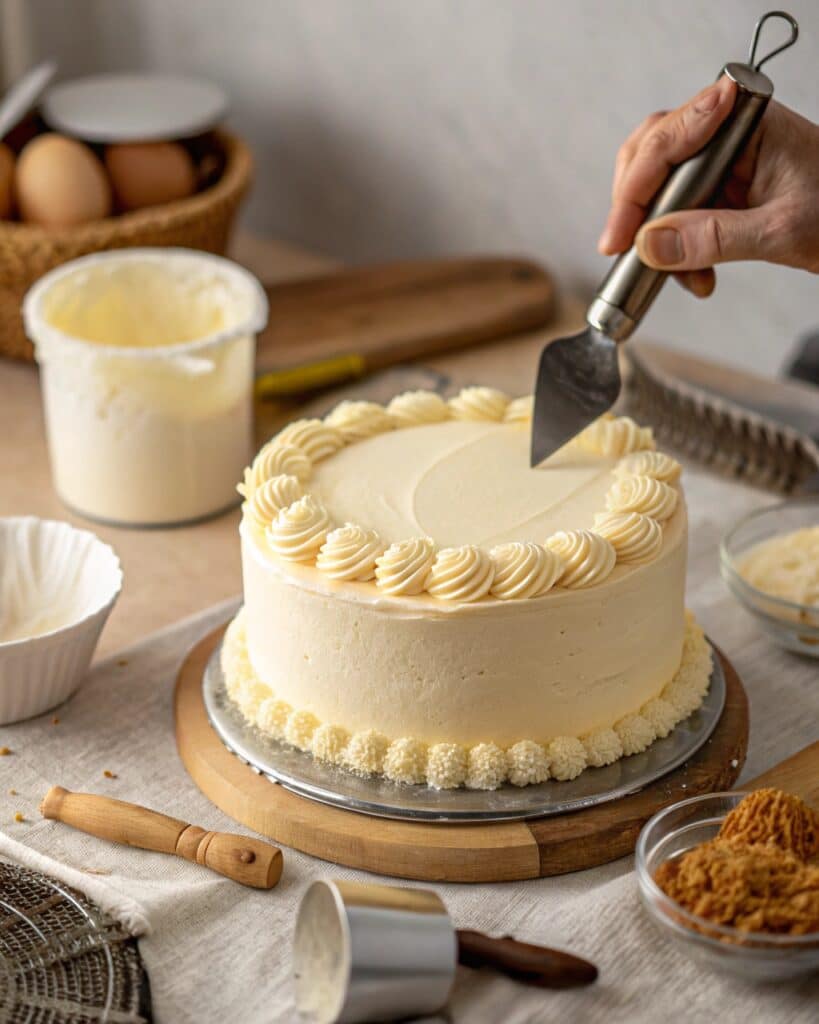
- Heart-shaped cakes: Ideal for romantic occasions. The symmetrical outline provides a stunning frame for swags and overpiping. A well-decorated Lambeth heart cake is practically a love letter in icing.
- Square cakes: Offer strong visual corners that emphasize sharp scrolls and detailed borders. This shape works well for layering with shells and pearls.
- Mini tiers or two-layer cakes: Great for beginners or small gatherings. You can still practice classic Lambeth piping without the commitment of a large, multi-tiered cake.
For added effect, consider alternating textures—like smooth fondant tiers with buttercream details piped using fine Lambeth cake piping tips. It’s a smart way to mix tradition with modern flair.
Unlike sleek styles like opera cakes, Lambeth cakes thrive on curves, piping height, and layered decoration.
How to Decorate a LambeHow to Decorate a Lambeth Cake Like a Pro
Decorating with Lambeth cake piping tips isn’t just technique—it’s rhythm, patience, and design. If you’ve followed along this far, you’re ready to turn your cake into a true vintage Lambeth cake. From your first shell to the final overpiped scroll, each detail plays a role. Let’s walk through how to decorate a Lambeth style cake properly—and what mistakes to avoid along the way.
Step-by-Step: How to Decorate a Vintage Lambeth Cake
Creating a stunning cake using Lambeth piping requires a layered process. Every pass with your piping bag should build upon the last.
- Start with structure. Use a smooth base coat of buttercream or fondant. A clean surface makes your Lambeth piping sharp and defined.
- Map your design. Lightly trace guidelines with a toothpick or template. This helps when decorating a symmetrical shape like a Lambeth heart cake.
- Use the correct Lambeth cake piping tips. For shells and stars, start with a tip like Wilton #18. For scrolls and overpiping, use PME 1.5 or Wilton #1.
- Build in layers. Begin with thick borders at the base. Add swags using petal tips like Wilton #104. Then, apply scrolls and overpiping for fine detail.
- Let each layer crust. Before adding new elements, give your piped details time to set. This avoids smudging and keeps your scrolls crisp.
Planning to pipe over buttercream? Make sure it’s chilled slightly before starting. For royal icing, use medium-stiff consistency to hold shape with your Lambeth cake piping tips.
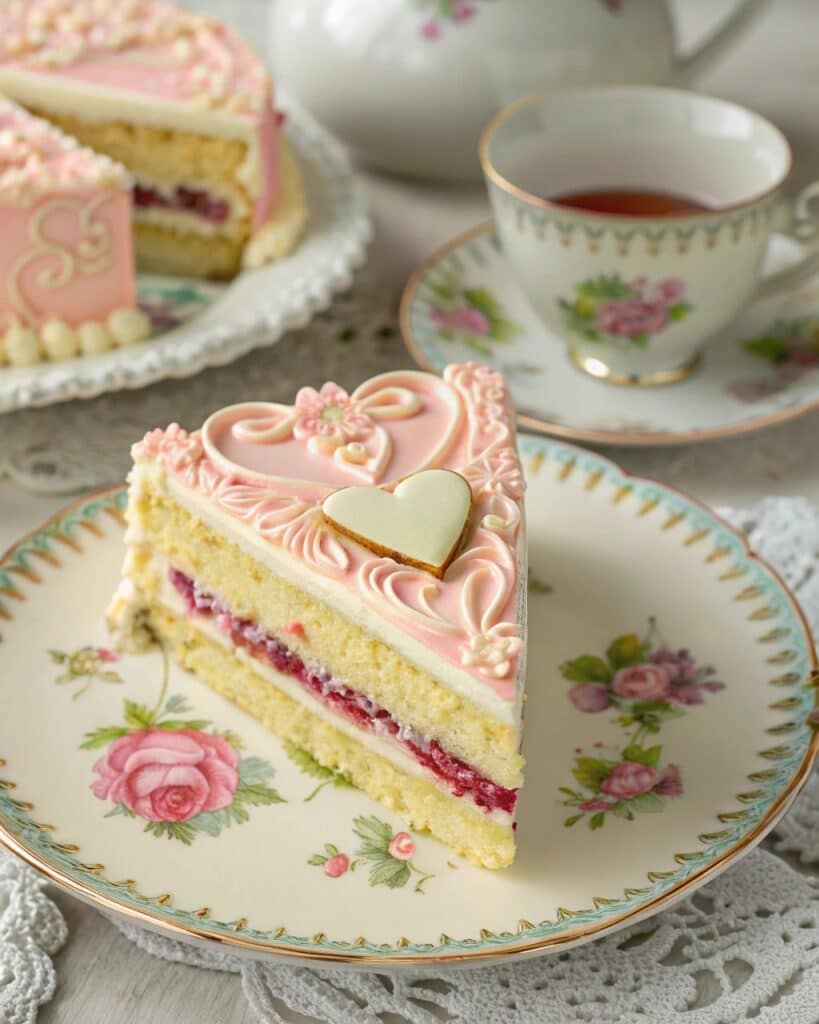
Avoid These Common Lambeth Piping Mistakes
Even with the best Lambeth cake piping tips, mistakes can happen. Here’s how to fix them before they ruin your design:
- Inconsistent piping pressure: Uneven lines? You’re squeezing too hard or too soft. Practice on parchment with each tip before touching your vintage Lambeth cake.
- Wrong icing consistency: Too soft and your swags collapse. Too stiff and it cracks. Test your icing before loading the bag.
- Crowding the design: Too many layers too close together will make your Lambeth style piping look messy instead of elegant. Space each feature with purpose.
- Skipping the dry time: Overpiping on wet scrolls will smudge them. Let your first layer crust or chill slightly before adding new detail.
If you’re just practicing, try using your piping tips on mini cupcakes to get a feel for flow and pressure.
The final touch is restraint. Yes, Lambeth piping is bold, but it’s also controlled. Each shell, swag, and scroll must earn its place—especially when decorating a classic Lambeth heart cake meant to impress.
Start with something simple like an easy chocolate cake to test out your Lambeth layers before moving to multi-tier designs.
Frequently Asked Questions About Lambeth Cake Piping Tips
What is the Lambeth method of piping?
The Lambeth method of piping is a classic cake decorating style that layers intricate royal icing designs using multiple Lambeth cake piping tips. Developed in England in the 1930s, it relies on overpiping—adding one layer of icing directly over another to create high-relief borders, scrolls, shells, and swags. This technique is what defines a traditional vintage Lambeth cake and gives it that iconic, opulent look.
What is the best tip for piping a cake?
The best piping tip depends on your design. For Lambeth piping, decorators often use a combination of tips: Wilton #1 or PME 1.5 for overpiping and fine lines, #104 for swags, and #18 or #199 for shell borders. Using a variety of Lambeth cake piping tips is key to achieving the multi-layered look that defines the Lambeth style piping.
What makes a cake a Lambeth cake?
A cake becomes a Lambeth cake when it’s decorated using the layered piping technique known as the Lambeth method. This includes multiple rows of shells, scrolls, swag draping, and fine overpiped details—all done with specialized Lambeth cake piping tips. The finished look is ornate, dimensional, and deeply traditional, often featuring symmetrical layouts and antique-inspired color palettes.
Why is it called a Lambeth cake?
The name “Lambeth” comes from Joseph Lambeth, an English cake decorator who popularized this ornate style in the 1930s. His book introduced techniques for overpiping and royal icing design that became foundational in cake artistry. Today, the term refers to any cake made with those layered Lambeth piping techniques using specific tips and structured designs.
What is a Lambeth cake?
A Lambeth cake is a cake decorated using detailed, overpiped layers of royal icing. It features borders, swags, scrolls, and accent piping done with precision, usually with Lambeth cake piping tips in varying sizes. These cakes are known for their baroque, vintage look and are making a huge comeback for weddings, anniversaries, and retro-themed parties.
What is a Lambeth style cake?
A Lambeth style cake is defined by ornate piping in symmetrical, multi-layered designs. It’s typically covered in detailed scrolls, shells, swags, and pearls—piped using fine-tipped nozzles like Wilton #1 or PME 1.5. Whether it’s a full wedding tier or a heart-shaped mini, Lambeth style piping transforms any cake into a classic showpiece.
How to decorate a Lambeth cake?
To decorate a Lambeth cake, first frost a smooth buttercream or fondant base. Then use a series of Lambeth cake piping tips to layer piping styles: start with shell borders, add swags, pipe scrolls, and finish with overpiping for depth. Each layer should be evenly spaced and allowed to dry before adding the next. The end result is an intricately detailed, dimensional cake.
How to make a Lambeth cake?
Making a Lambeth cake starts with a clean, chilled base. You’ll need royal icing in medium-stiff consistency and a selection of Lambeth piping tools. After mapping your design, begin layering shells, swags, and scrolls. Use different Lambeth cake piping tips for each technique. Let each layer set before overpiping. It’s detailed work, but the result is a rich, vintage-inspired centerpiece.
Conclusion
Decorating with Lambeth cake piping tips isn’t just about technique—it’s a return to one of cake decorating’s most elegant traditions. From the detailed scrolls to the carefully piped over-layers, Lambeth piping turns any cake into a romantic, vintage masterpiece. Whether you’re creating a tiered centerpiece or a charming Lambeth heart cake, the key is layering with care, practicing your spacing, and choosing the right tips for each step.
If you’re just starting, don’t stress about perfection. Even the most impressive vintage Lambeth cake begins with a single shell border. With time, patience, and the right guidance, you’ll master this timeless style and make it your own.
for more cake recipes follow us in facebook page and Pinterest

